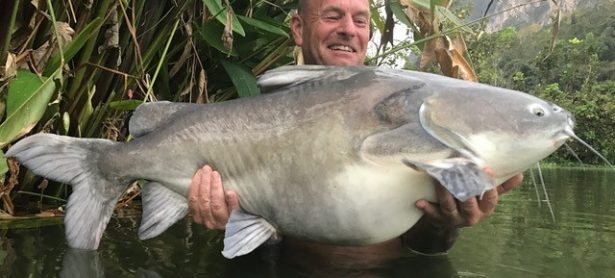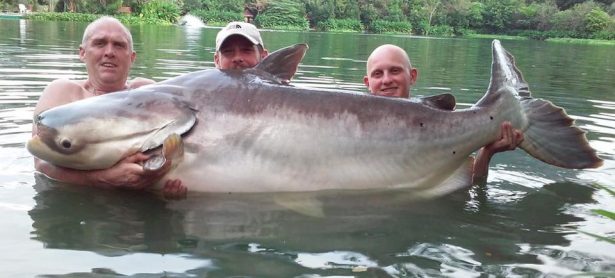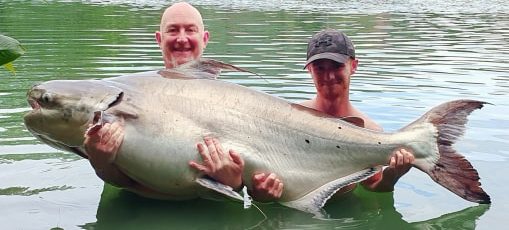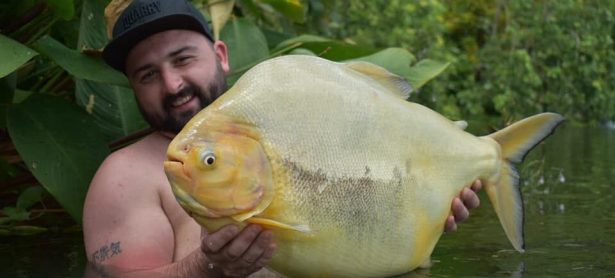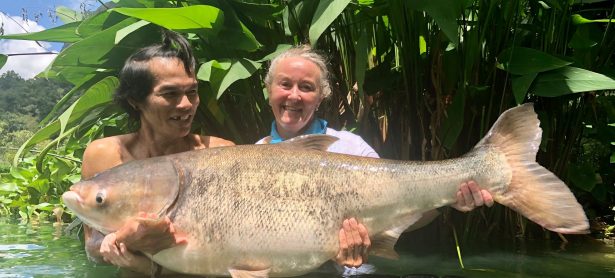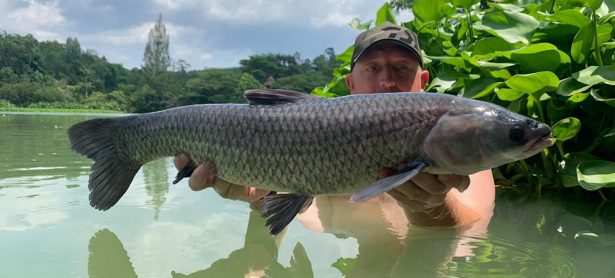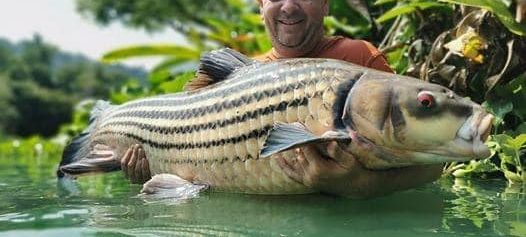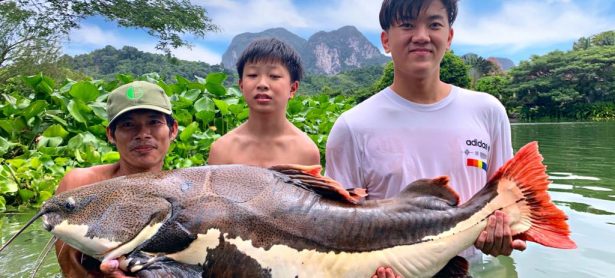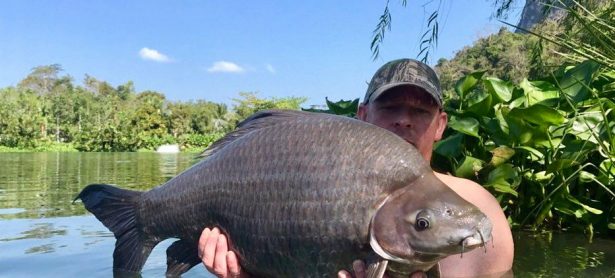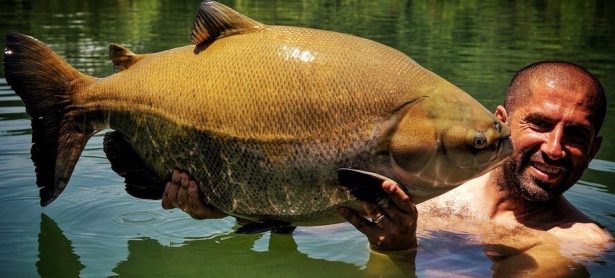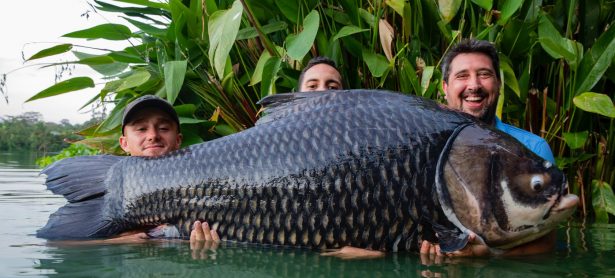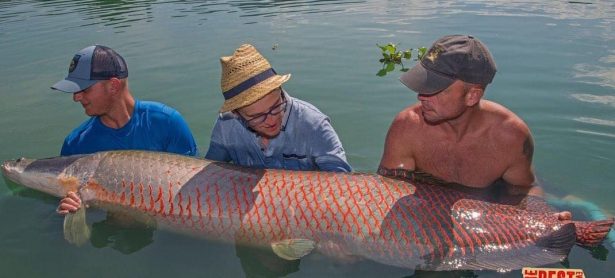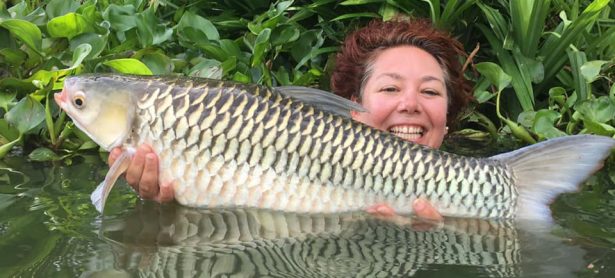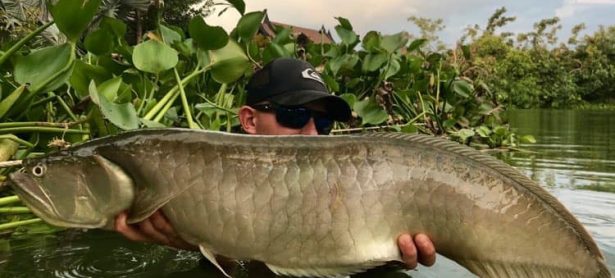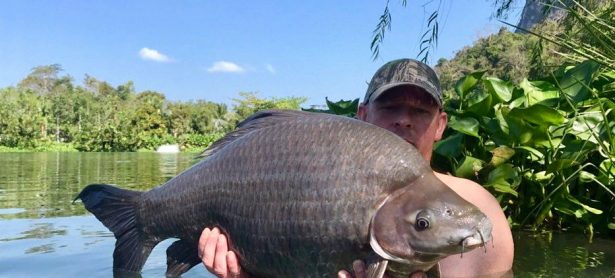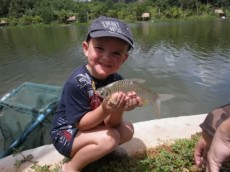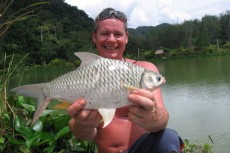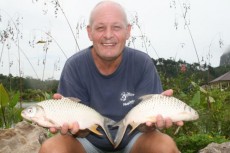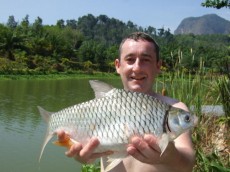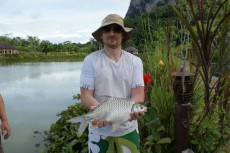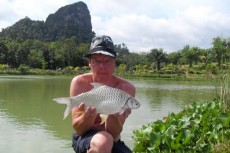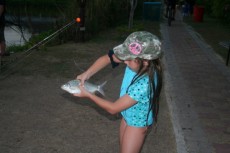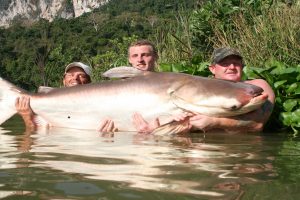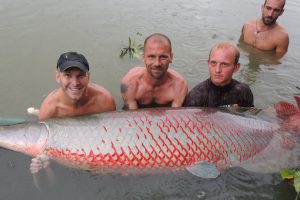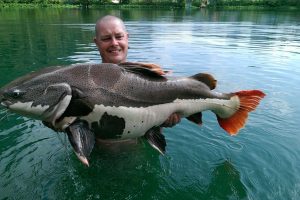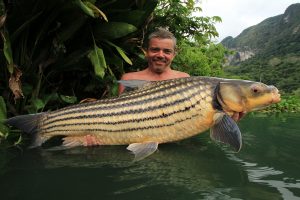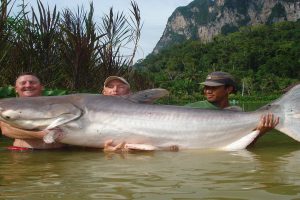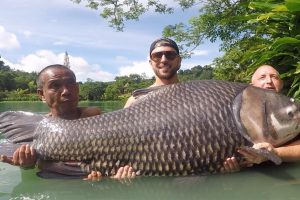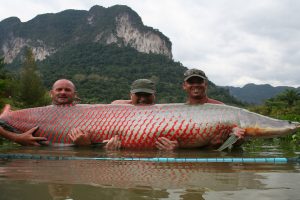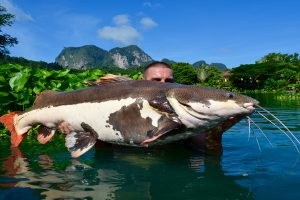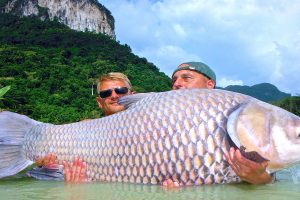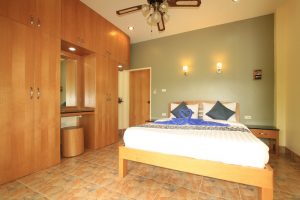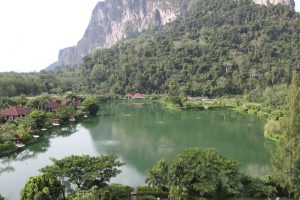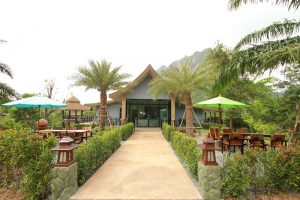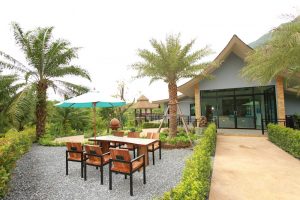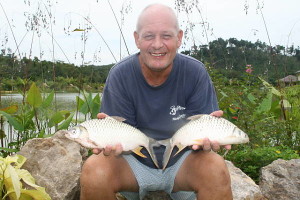 Name: Java barb (silver barb).
Name: Java barb (silver barb).
Species: Barbonymus gonionotus.
Thai name: Pla tapien kao.
Max length: 60cm.
Max weight: 6kg (12lb).
IGFA record: 2.31kg (5lbs 1oz.)
Diet: Insects, shrimp, bread, maize, aquatic plants.
These fish are not a target species and were never stocked in Gillhams. They occurred naturally, originating from the feeder stream, however they can be fun on light tackle. To fish for our Java barb you need to use a light float rod just tripping the bottom on the marginal shelf. Bait with cereal groundbait and fish either bread or maize on your hook. The Java barb is similar to the European roach in appearance, and the fight is very much the same. When targeting these fish you will also hook up our carp species, and for this reason we insist on minimum 8lb line strength, which, when used in conjunction with size 8 Drennan Super Specialist hooks, will handle accidental carp. Please do not release these fish back in the lake as they are breeding rapidly here; we have to net the fry on a regular basis and remove them. Ask our guides for a keepnet to retain this species in. For photos of these fish you do not need to get in the lake, but for the fish’s protection do photo them over grass.
General facts on the Java barb:
The Java barb is native to Thailand, Malaysia, Sumatra and Java. They are found in most water systems be it still water or flowing, even down to brackish water, although they do prefer still water. Java barb are silver in colour with orange and red tipped dorsal and caudal fins, and they have yellow pectoral and anal fins. The Java barb has a small head with a pointed snout and small barbules. They are considered useful in aquaculture for cropping excessive vegetation. The Java barb spawn on a regular basis all through the year, and if they are not controlled they reach pest proportions. Here at Gillhams we have a regular netting campaign to remove excessive fry. They are marketed fresh and considered a food fish by the Thais where they are ground up fine and are used in lap pla, a spicy minced fish dish. Alternatively they are mixed with garlic and rice, left to stand for one or two weeks, and then grilled to make a dish called som pla. If you wish to try this dish, good luck, as its pungent flavour (and smell) is not suited to the western palette! They are also used in the aquarium trade, mainly in basic aquariums, and as they need little care they are used mainly by children in their first aquarium setups.



